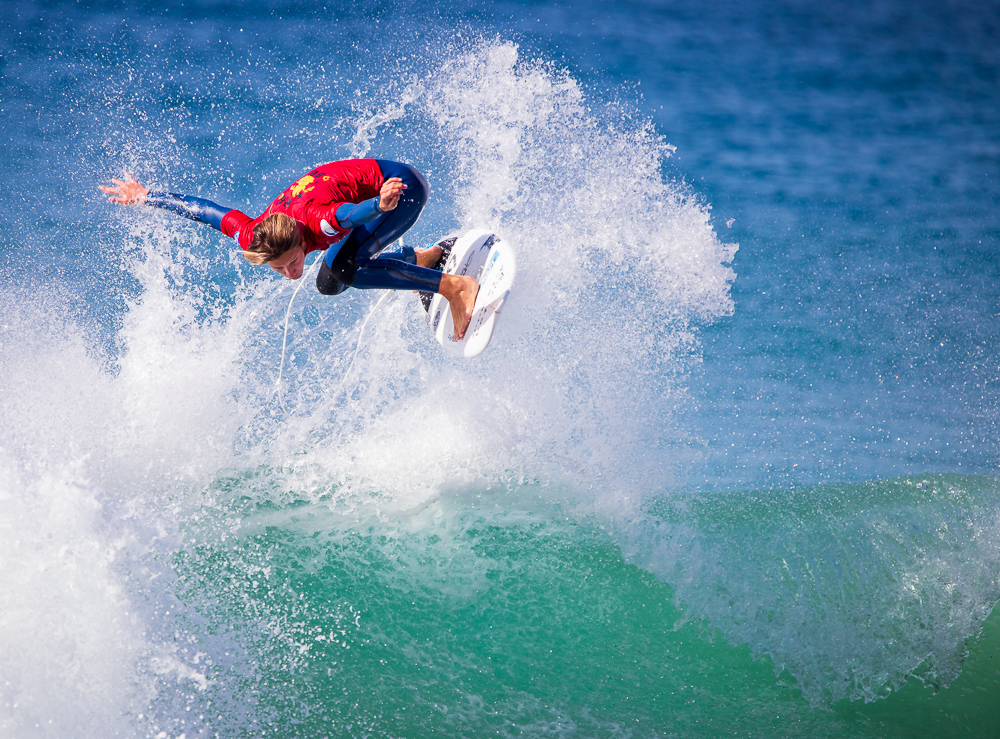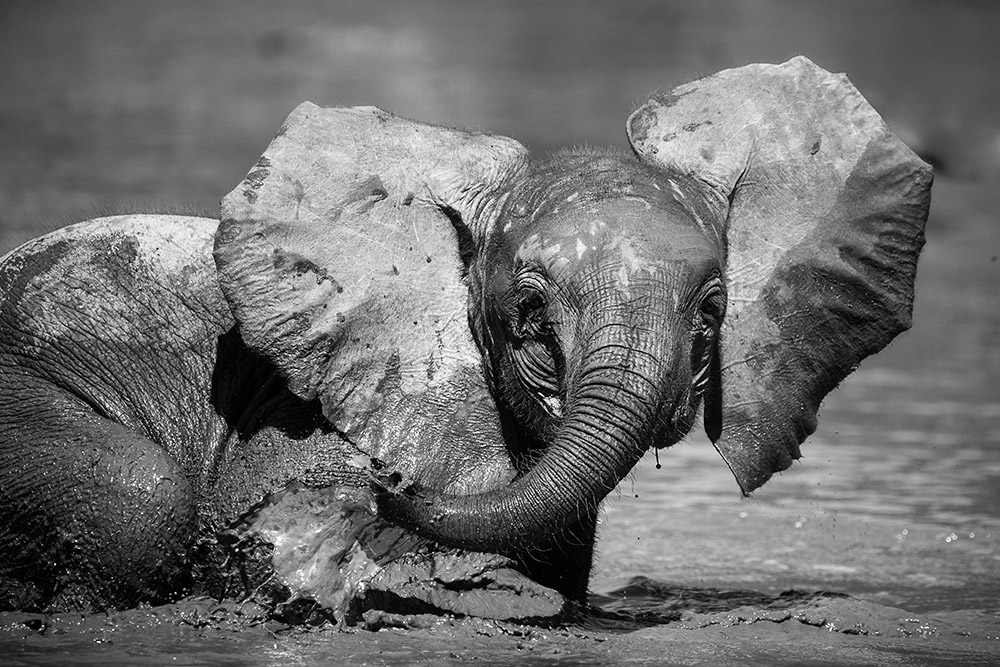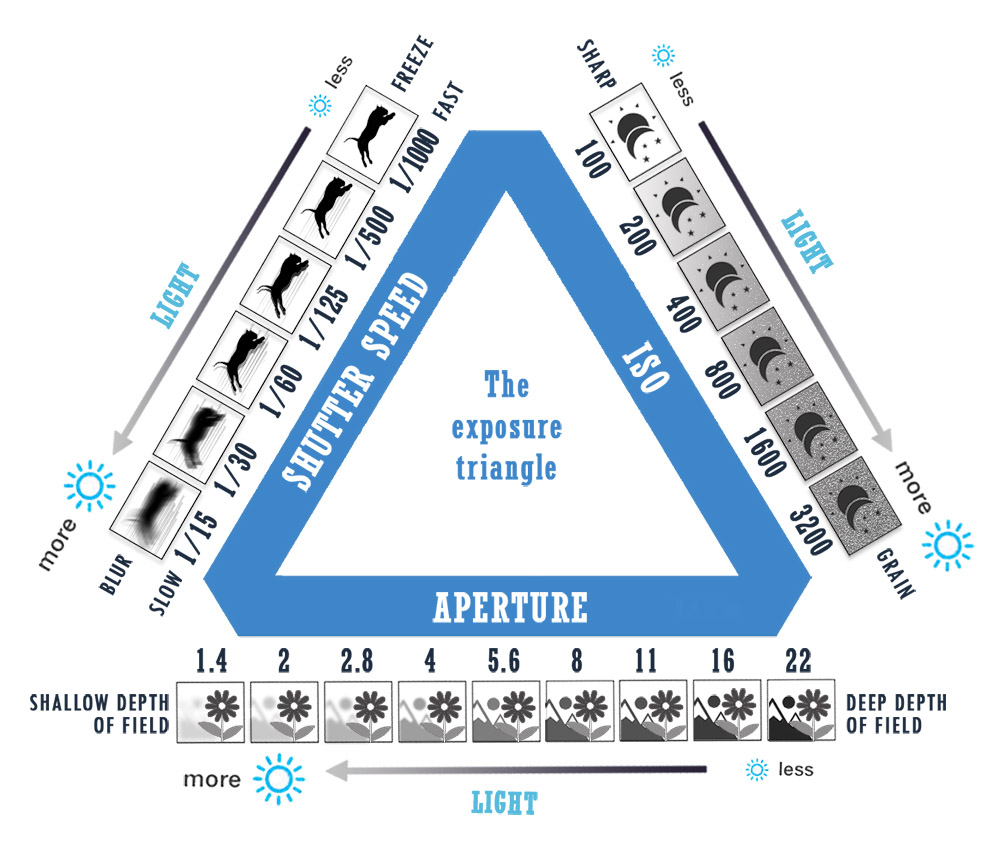What does using a fast shutter speed do to an image?
Shutter speed is one of the ways we can control the outcome of an image. We can choose to create motion using slower shutter speeds and we can freeze the motion using faster shutter speeds.
In this article, we’ll talk about fast shutter speed and how it affects your images. Make sure you checkout my new in-depth article The Ultimate Guide to Shutter Speed in Photography for more tips and lots of examples of how shutter speed is used in photography.
Surfer aerial display – (very fast shutter speed to freeze action)
I captured this surfer at his peak – pulling off an aerial maneuver in a local surfing competition (King of the Box). Here I used a very fast shutter speed of 1/1600 sec to freeze the action, shot with a 500mm lens, handheld. Click on the image to see the water droplets close-up.
What is considered a fast shutter speed?
Higher shutter speeds work by opening and closing your shutter quickly. When you are using your shutter speed to freeze motion or capture a moment you’re likely using a shutter speed of 1/125th or higher. When you do this all action and movement in your frame stop or are frozen.
When to use fast shutter speed
Anytime you want to capture a split second, mid-movement or stop the action you’ll want to choose a higher shutter speed. If you are photographing sports you’ll want to focus on the person doing the sport so they remain in focus and sharp. Using a shutter speed of 1/1000 sec will completely freeze the action.
Wildlife photography (fast shutter speed)
I photographed this baby elephant in Zimbabwe using a long lens (600mm focal length) and a fast shutter speed of 1/800 sec. The reason I used a fast shutter speed is because I want to freeze the action of the elephant as it was wading out of the water and turning it’s head and ears towards me.
Remember that fast shutter speeds effects exposure
Don’t forget that when using faster shutter speeds, there is less light let in to expose your sensor (film). If you are outside and it’s sunny out, this isn’t an issue.
When photographing indoor events you’ll need to increase your ISO in order to use the shutter speed you want and to allow more light in. Be careful not to use too high of an ISO so that you don’t introduce noise into your images.
Brent’s shutter speeds rule: Double the lens focal length
Want to stop blurry images due to camera shake? The old rule-of-thumb to remember is to keep your shutter speed equal to your focal length when hand-holding your camera. For example, if you’re using a 400mm lens you don’t want your shutter speed any slower than 1/400 to avoid camera shake. I’ve come up with a NEW RULE to be on the safe side and to compensate for non-full-frame-sensor-camera’s… Brent’s Shutter Speed Rule: Use double the shutter speed compared to the focal length of your lens. So if you’re shooting with a 50mm lens then use 1/100 sec shutter speed.
Here are some simple guidelines based on what you are photographing.
- 1/2000 sec: Use to capture birds in flight
- 1/1000 sec: Good for photographing sports action
- 1/500 sec: Capture your kids playing or freezing the motion of a moving car
- 1/250 sec: Anytime you have people moving, jumping and dancing, this will help stop the action.
- 1/125 sec: For portraits, this is a good rule of thumb in order to avoid blurred images
- 1/100 sec: Keeping your camera above this speed helps to avoid any camera shake
SLOWER SHUTTER SPEEDS - 1/60 sec: Once you start using 1/60 or less it’s time to get out and use the tripod
- 1/20 sec: You can use this speed to blur water or people walking
- 1-3 seconds: Creating blur and smoothing out moving water and waterfalls
- 21-30 seconds: This is where you can start in order to capture the night sky with stars
- 10 minutes: To create star trails this is the baseline exposure time.
Bird photography needs fast shutter speed
I photographed this Lilac Breasted Roller in Africa while leading a photo safari. Shot using a 500mm lens (long telephoto lens) and because I was hand-holding my lens I used “Brent’s shutter speed rule” which is 2x the focal length of my lens which equals 1/1000 sec shutter speed.
The Ultimate Guide to Shutter Speed in Photography

Summary
- Fast shutter speed freezes the motion in your image.
- Fast shutter speed is 1/125 sec or faster. 1/1000 sec is super fast shutter speed.
- Fast shutter speed lets less light into your camera and will effect exposure making your images darker.
Related Articles
Did you enjoy this article? Check out these related articles, too:
- The Ultimate Guide to Shutter Speed in Photography
Shutter Speed and Photography: Everything You’ve Ever Wanted to Know - Shutter Speed Mistakes And How To Avoid Them
How to avoid common shutter speed mistakes in your photography - Catch the Wave with Shutter Speed
How to use shutter speed to make water more appealing and exciting by capturing movement.
Do This Now
Please leave me a comment below – I’d love to know what you think. Brent






Great, simple way to understand shutter speed. Thank you for sharing and love the elephant photo!!
Thanks Sallie
Thank you for sharing such a clear outline of shutter speed. Your explanation is simple and effective.
Thanks Veronica
Your articles are free useful for beginners like me so thankful
Great info!! I’ve been confused for a while regarding shutter speed but you explain it perfect
Thank you